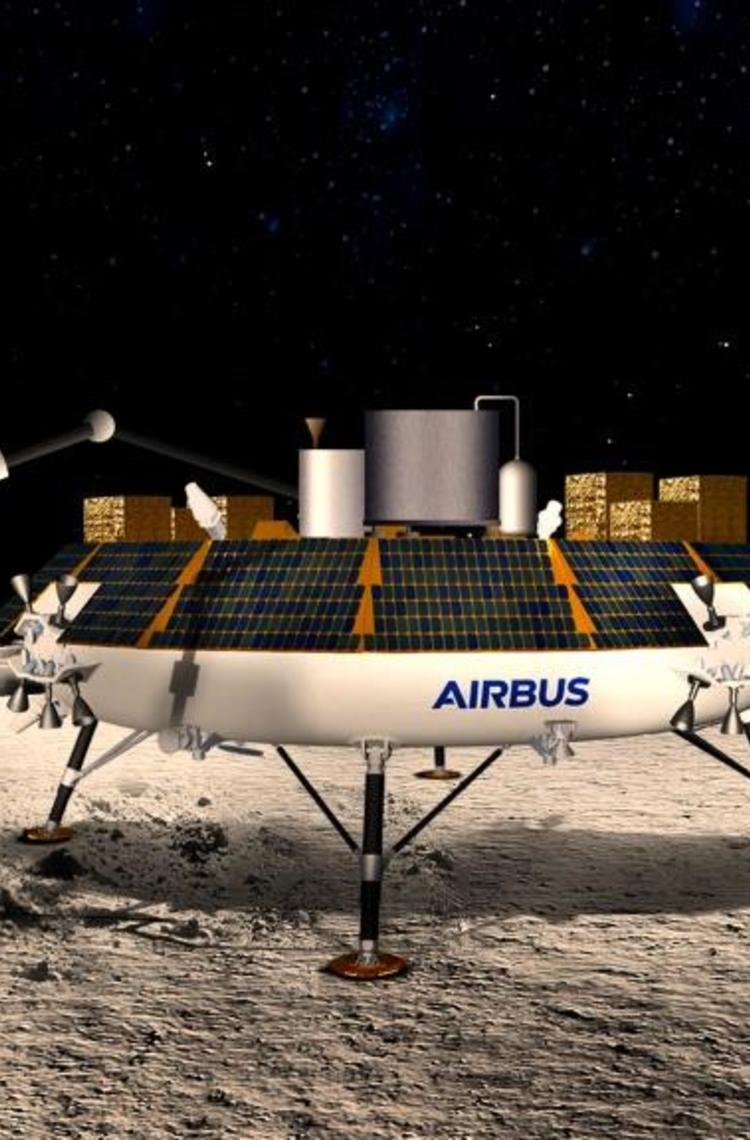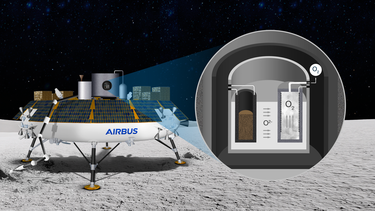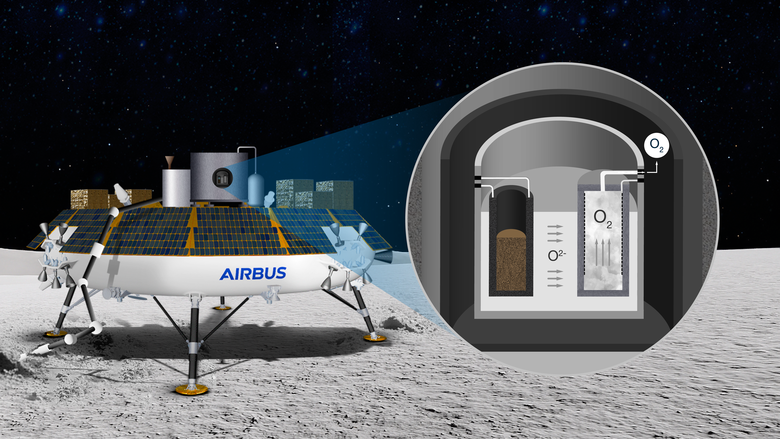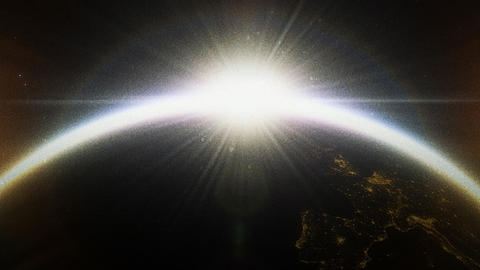Today is International Moon Day, which marks the 54th anniversary of the first Moon landing. To celebrate, let’s take a closer look at the future of lunar exploration with Achim Seidel, an Airbus engineer who works on Roxy, an industrial process that could one day provide all the essentials necessary to sustain human life on the Moon.
Achim, why is it a good idea for humans to settle on the Moon?
There are as many good reasons as there are craters on the Moon! One of the most obvious ones is that the Moon is an ideal stepping stone for us to venture even further into space: due to its low gravitational pull, the energy required to launch deep-space missions is much lower. But before we can do that, we need to establish a lunar ecosystem where people can live long term by using local resources. Enabling this will lead to a raft of new technologies that could also benefit life on Earth, which is very exciting.
What are the essential elements for human lunar settlement?
Just like on Earth, we need to make sure that there is enough oxygen for humans to breathe and water to drink. These two are our highest priority. Metals and alloys follow, as these would be necessary to construct buildings, habitats and structures, as well as wires and raw materials for manufacturing satellites in deep space.
How is Airbus helping make this happen?
Transporting key elements of life such as oxygen, water and metals to the Moon would be far too expensive. To make things economically viable, they would have to be produced locally on the Moon. We call this concept ISRU, short for in-situ resource utilisation. We are currently developing technologies and systems that are capable of doing exactly that. Our Roxy (Regolith to OXYgen and Metals Conversion) process is a showcase example: it uses regolith, the dust on the surface of the moon, to produce these key resources in a highly efficient manner. This limits the need for expensive supply deliveries from Earth.
When will all this become reality?
Roxy is currently in the lab stage and has already produced oxygen and metals in a demonstration here on Earth. On the Moon, we’ve designed the project to have three stages. First, we plan to build a lunar demonstrator by 2026-27 that would be capable of producing a few grams of oxygen from regolith in one lunar day (28 Earth days). In the second stage, planned for around 2030, a pilot plant would produce 500 kilograms of oxygen per year. This pilot plant could support lunar missions by providing oxygen for life support. In the final stage, the plant would become operational in the second half of the 2030s and produce about 50 tons of oxygen per year, which would be used for living quarters and in space suits.The plant would also produce metals that could be used as construction materials, and could even produce rocket fuel to propel spacecraft to Mars and Earth.
How will life on Earth benefit from all this?
On Earth, Roxy could be used to reduce emissions from metals production through a carbon-free energy carrier cycle. In this process, iron powder produced by Roxy would be used as an energy carrier. When the iron powder burns, it turns into iron oxide without producing carbon dioxide. Roxy could then be used to recycle the iron oxide back to iron, producing high-purity oxygen as a valuable by-product.



